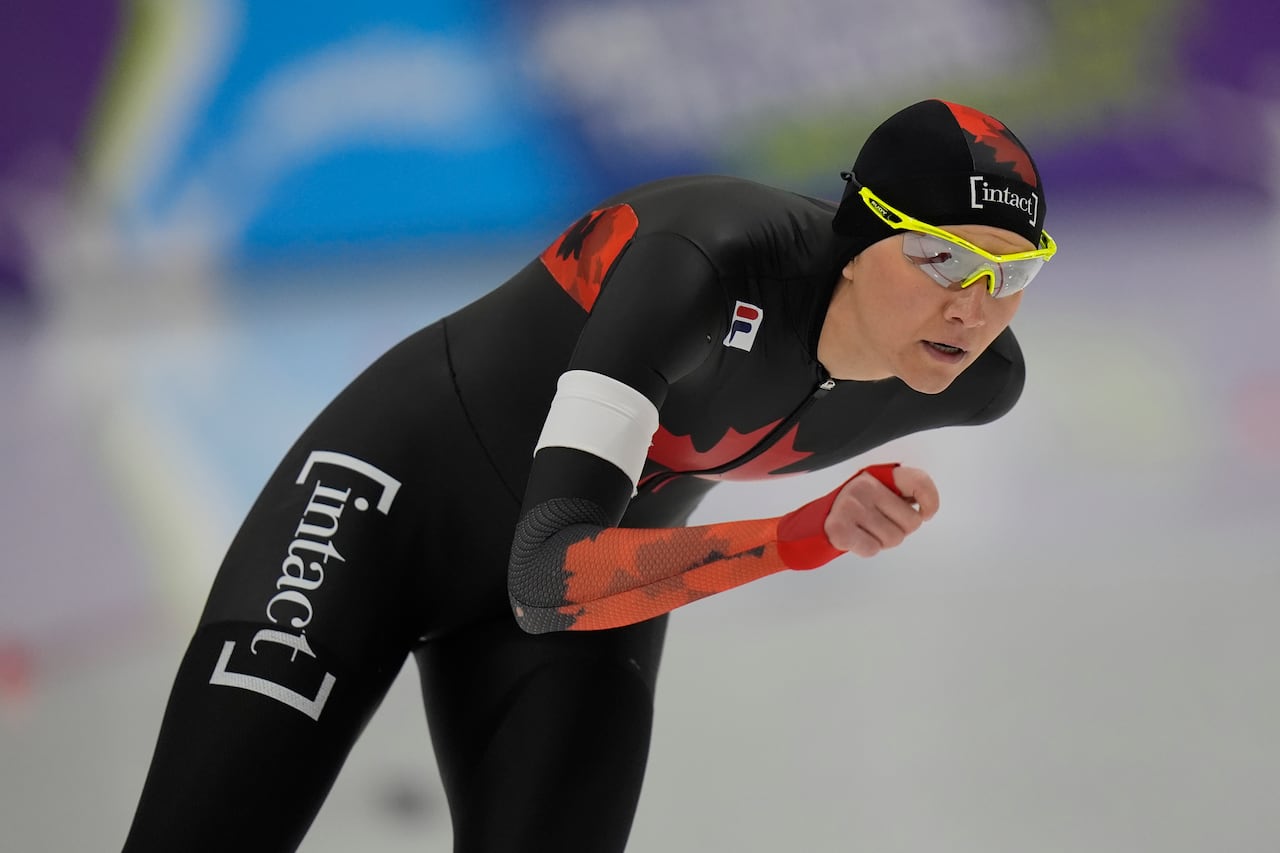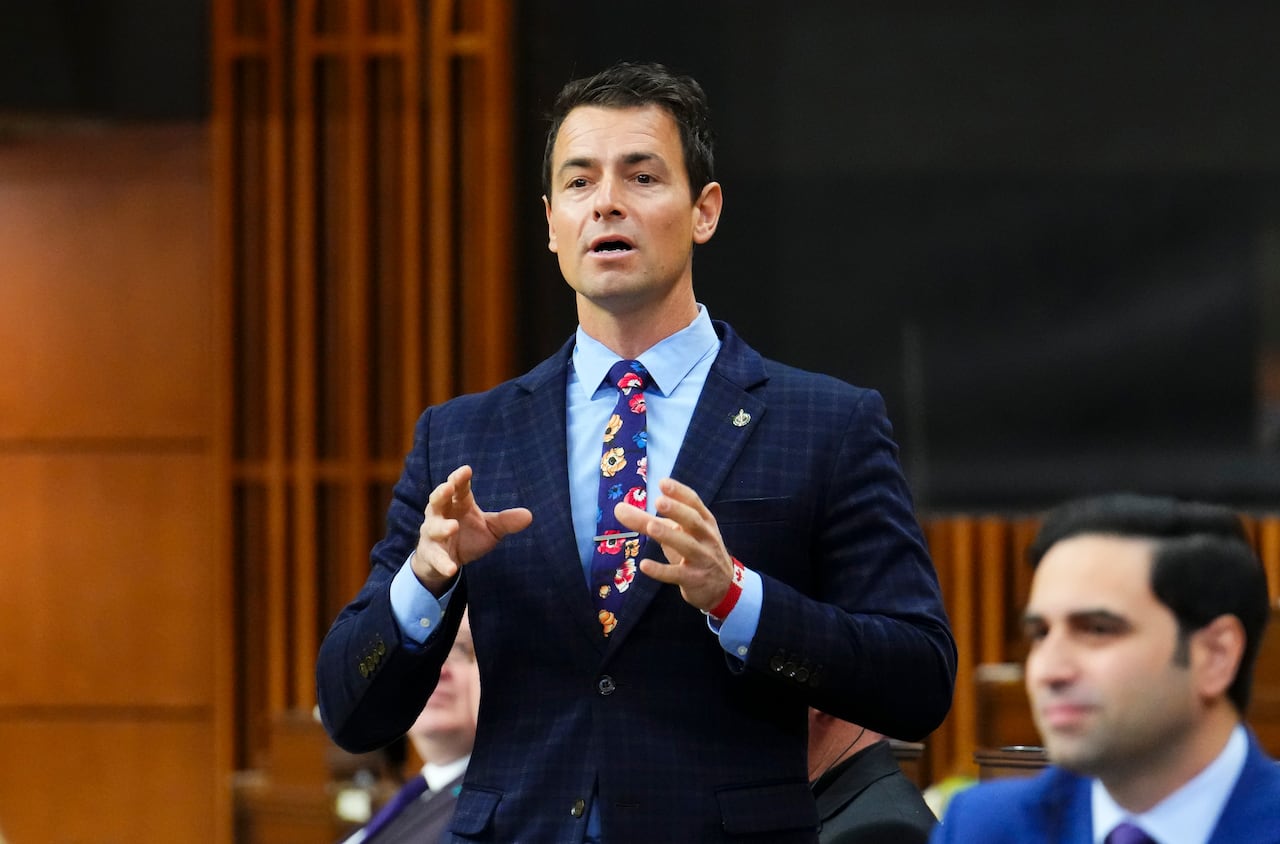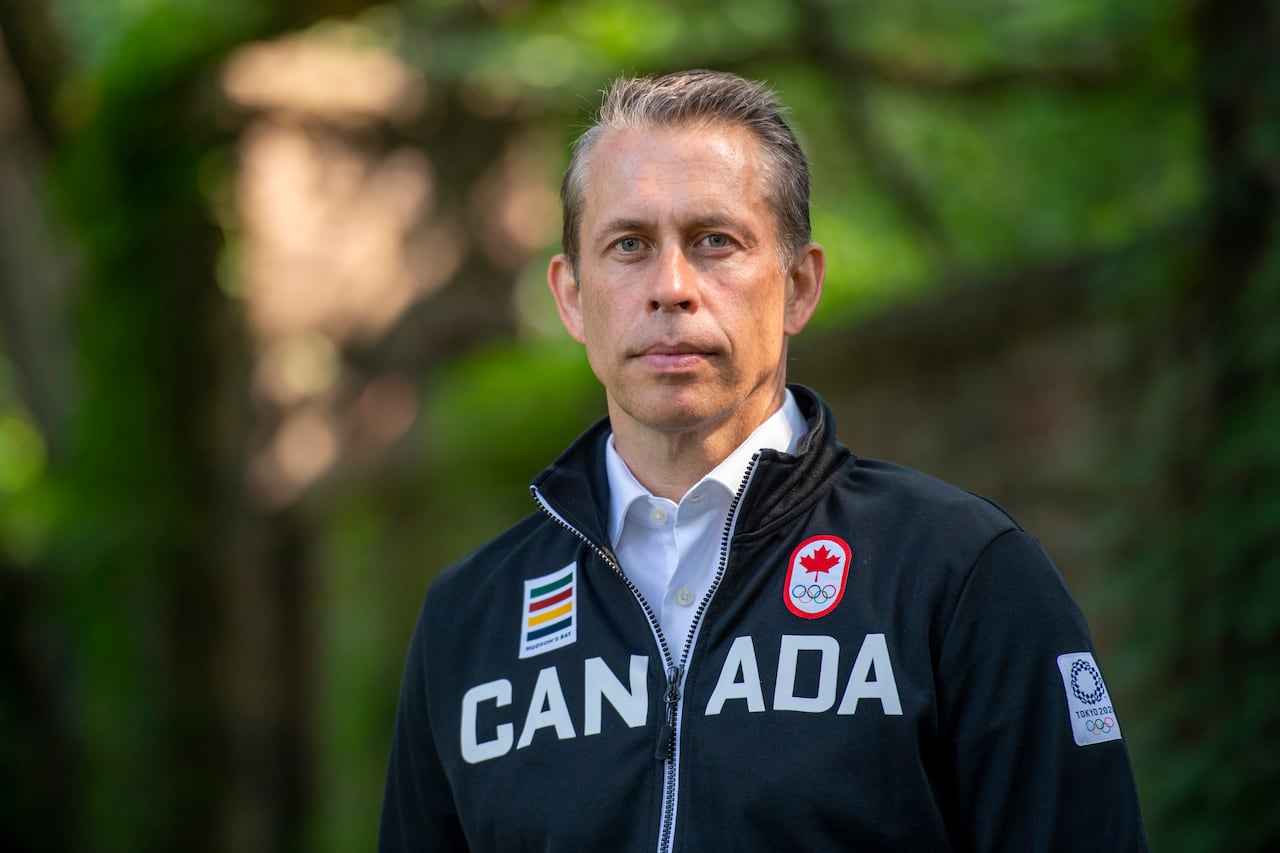In an ideal world, Canadian luger Caitlin Nash would be peaking in time for the 2030 Olympics.
But Nash fears she may not even get the chance to compete.
“I’m at a point where financially I can’t sustain this lifestyle for that long,” Nash, 23, told CBC Sports. “I think it’s pretty devastating to have that decision kind of being played out for me and it’s not my decision. That’s not, obviously, how I would want my career to end.
“I think if things don’t change, we will see a lot of people retire after this quad across a lot of different sports in Canada.”
For 20 years, core funding for sport from the federal government has not increased — even though inflation has caused prices to rise by more than 50 per cent. According to the Bank of Canada, an item that would have cost $100 in 2005 would now cost $153.50. But that problem is two decades old.
In recent months, some national sport organizations (NSOs) have been informed that their funding is set to be slashed by the federal government. Total spending might remain the same, but there are many more mouths to feed now than there were in 2005.
Costs increased
Every year, the problem grows. And as the problem grows, the responsibilities of the financial burden get shifted down through the system. Not only do many NSOs struggle to operate efficiently — they struggle to operate at all. Thus, costs are increased across the board, from senior national athlete team fees to youth registration.
Nash, for example, will pay $25,000 in team fees for this Olympic season. On top of that, she will have to pay out of pocket to attend events from Lake Placid, N.Y., to Lillehammer, Norway.
Last season, she said her fee was $20,000, and it included everything.
“This year, to qualify for the Olympics, we need to go to all of the races that we can. And so that’s why to make up a little bit of that deficit, more of the cost is falling onto the athletes,” Nash said.
Nash and her fellow lugers are not the only athletes suffering this fate. At Bobsleigh Canada Skeleton (BCS), team fees have risen from $2,000 in 2022 to $25,000 this season.
Originally slated to be $30,000, BCS was able to slash $5,000 per athlete thanks to some newfound corporate sponsorship and donation dollars.
The increase from 2022 also comes with additional inclusions such as travel and accommodations for World Cup stops in Europe. However, in the past, some bobsleigh pilots have shouldered that cost for their crew. Now, that’s no longer tenable.
Brakemen like Cesar De Guzman, whose pilot used to pay for travel, could be facing a major increase.
“If our team fees were like my first year, this might be a different conversation. But I feel like I’m just staring at the top of Everest and I’m at the start of the Trek 2 base camp,” De Guzman said.
Neither Nash, a full-time carded athlete, nor De Guzman, a next-gen athlete who receives only eight months of funding, competed at the 2022 Olympics in Beijing.
Olympic medallists not immune
Speed skater Isabelle Weidemann not only raced in Beijing — she won the full slate of medals: gold, silver and bronze.
Yet even Weidemann, who declined to be interviewed for this story, is not immune to the funding crisis. In February, she revealed that she is in debt after having to bear costs for things that Speed Skating Canada can no longer afford.
“The reality is we are falling way behind our competitors. Germany, Italy, France are outspending us by 10 times. Great Britain nearly six times our investment,” Canadian Olympic Committee CEO David Shoemaker revealed to CBC Sports.
“This is an opportunity for [Canadian Prime Minister] Mark Carney to say enough is enough, that our athletes matter to us. This is not the sport system that we envisioned.”
The sport system is a complicated one — one that turns what might be a simple flow chart into the Charlie Day meme.
In the simplest terms, there are two main sources of funding for sport in Canada: government and corporate.
Every level of government supports sport in some way — however, national sport organizations, who are responsible for their sport at a high level across the country, mainly feed off the federal government.
The feds direct resources toward the sport system through Sport Canada, whose three main programs support athletes, NSOs and event hosting.
Provincial and territorial sports organizations also have access to federal grants.

‘Advocating for more money’
Adam van Koeverden, the Olympic sprint kayak champion and four-time medallist who now serves as the secretary of state for sport in Carney’s cabinet, said Canada’s sport system is “very efficient.”
“It’s not anything new that more money in the sport system would be beneficial. But I think what we’ve been doing as a sport system has been, we’ve been advocating for more money for swimming or more money for canoe kayak or more money for rugby or more money for rowing. And what we need to see is just a larger investment in sport from all sectors and every level of government,” he said.
“That includes the federal government. I would also say that we’ve been a leader in that regard. We have increased the amount of money that we’ve invested in all levels of sport, physical activity, recreation and play from playground to podium.”
Core government funding, at a federal level, is the number that has stagnated for 20 years. In the April 2024 budget, the government proposed two-year investments totalling $41 million toward the Sport Support Program (which goes toward NSOs and five other groups who support the development of Canadian sport), the Future of Sport in Canada Commission (a body whose two main focuses are funding and safe sport) and community sport programming.
The proposal made up less than half of the $104 million increase requested by the Canadian Olympic Committee (COC). The 2025 federal budget will be released on Tuesday.

Federal money not enough
Meanwhile, athletes themselves can access direct funding through the Athletes Assistance Program, which draws from a pool of $40 million to support over 1,900 eligible athletes. Some, like Nash — a full-fledged senior team member — receive monthly cheques year-round. Others, like De Guzman, are tabbed next-gen athletes, and only receive payments for eight months.
In either case, the help is minimal. Even if every athlete received an equal share of the $40 million, that would equate to about $21,000 annually for each.
That number would not even cover Nash or De Guzman’s team fees. It also falls under every single 2023 low-income cut-off, according to the government of Canada. The lowest of those is for rural inhabitants, but athletes typically train in Calgary, Toronto, Vancouver or other major metropolitan areas.
However, athletes and NSOs can also make money through the private sector — a second key source of income, and one that is important in the latter showing the federal government that they are healthy and worthy of investment.
For athletes, that means both sponsorship and, in some cases, working a second job.
Outside of established medal winners, sponsorship can be a tough sell — the return on investment for Red Bull patching its logo onto Summer McIntosh’s swimsuit is likely substantially higher than if it were to do the same for Weidemann.
Athletes, then, must give their time to companies who sponsor them, whether through endorsement or community involvement. The other option is to do what the silver-medal women’s rugby team did to fund its World Cup journey, crowdfunding $1 million to compete in England.
Canadian rugby players Tyson Beukeboom and Taylor Perry were treated like rock stars at the Women’s Rugby World Cup in England, where they captured a silver medal. But without full-time contracts or a domestic league back home, they are both unemployed and looking for work.
In either case, performance alone won’t cut it, even if performance itself is a full-time job.
And in 2025, performance means more than getting in a couple workouts and showing up at World Cup events. Now, competing with the best requires two-a-day workouts and round-the-clock body care, including physical therapy and nutrition.
There is little time for other obligations. Yet, carding is not enough to sustain that lifestyle. Often, athletes will have second part-time gigs like Zamboni driving. There are also those who carry full-time jobs: bobsleigh pilot Cynthia Appiah used to work with the Toronto Blue Jays; her 2022 brakewoman, Dawn Richardson Wilson, is a correctional officer.
Meanwhile, NSOs face similar challenges in convincing corporate Canada that they are worthy of investment — and, to make matters worse, they are all now competing with each other and the COC.
Ultimately, the COC — as the face of Olympic sport in Canada — winds up with a large sum of corporate sponsorship, including 37 partners, per Shoemaker.
“We take as much of that funding as we possibly can to run an efficient business and we reinvest it in the sports system. … Over the next 10 years we’ll put $500 million into the sports system to help out Canadian athletes in these organizations, but it’s not enough,” he said.
Some of that reinvestment comes through Own The Podium, a separate organization that identifies Olympic medal candidates for the COC, which in turn directs dollars to those NSOs.
At BCS, however, Own The Podium funding has been slashed by $1.1 million since the last Olympic cycle, according to CEO Kien Tran. And that’s just for bobsleigh.
Tran said his organization was weeks away from bankruptcy when he took over in May 2024. BCS avoided that fate with cuts across the board, even selling a pair of sleds to make the money work.
Meanwhile, that $1.1 million loss now has to be made up for in part by the athletes’ team fees.
“When you get cut $1.1 million, that’s where it’s coming from. Because we were cut so much, there was a lot of upheaval, sponsorships went away. And we just had no money. And so unfortunately, the athletes bore the brunt of it,” Tran said.
Tran credited the athletes for their resiliency. But at some point, the rubber may have to meet the road. Does Tran fear that BCS could begin losing athletes?
“Absolutely, 100 per cent. The fear is that this goes to a pay for play. You don’t necessarily get your best athletes — you get the ones that can afford it,” he said.

Athletes can also apply for grants through the COC, which oversees the entire system. Through the COC’s Athlete Excellence Fund, Canadian athletes are rewarded with $20,000 for gold medals, $15,000 for silver and $10,000 for bronze.
It is under this financial reality that Team Canada went to the Paris Olympics and won 27 medals, including nine gold — both national records for a non-boycotted Olympics.
But the question now — given the uncertainty raised by Nash, and the reality of a financial situation that at minimum is not improving — is whether that success in Paris was secretly a double-edged sword. Whether Canadian athletes are victims of their own success. Whether more medals decrease the urgency for funding.
Shoemaker objects to that notion.
“Canadian athletes are incredible. They prove time and again that they can do much more than their competitors with less resources. But that’s not an excuse or reason not to invest in them the way that they should be invested in,” he said.
So does Nash.
“That inspires me in itself to see how well our athletes are able to do with so little, but also it provides me with a little glimmer of hope — like, maybe if we do find a way to get us a little bit more funding, imagine how much more we would be able to achieve as an entire Canadian sport system,” she said.
Mike Bartlett, Canada Basketball CEO and co-chair of the summer sport caucus that oversees government advocacy efforts along with the COC, guides an NSO that has seen a huge growth in interest as well as a landmark return to the Olympics for its men’s national team.
Yet his group faces the same problems as anyone else in Canada — its resources simply do not come close to matching top opponents.
“We try and get to the finish line by being Canadian, just scrappy and with a lot of heart and sometimes that’s enough. Sometimes it’s not,” Bartlett said. “But the dollar, that’s the simplest argument. My grocery bill in 2005 did not cost me what my grocery bill does today. So why does sport?”
This three-part CBC investigation into the Canadian sport funding crisis will continue on Thursday with a look into the root of the issue. Friday’s part three examines possible solutions.







